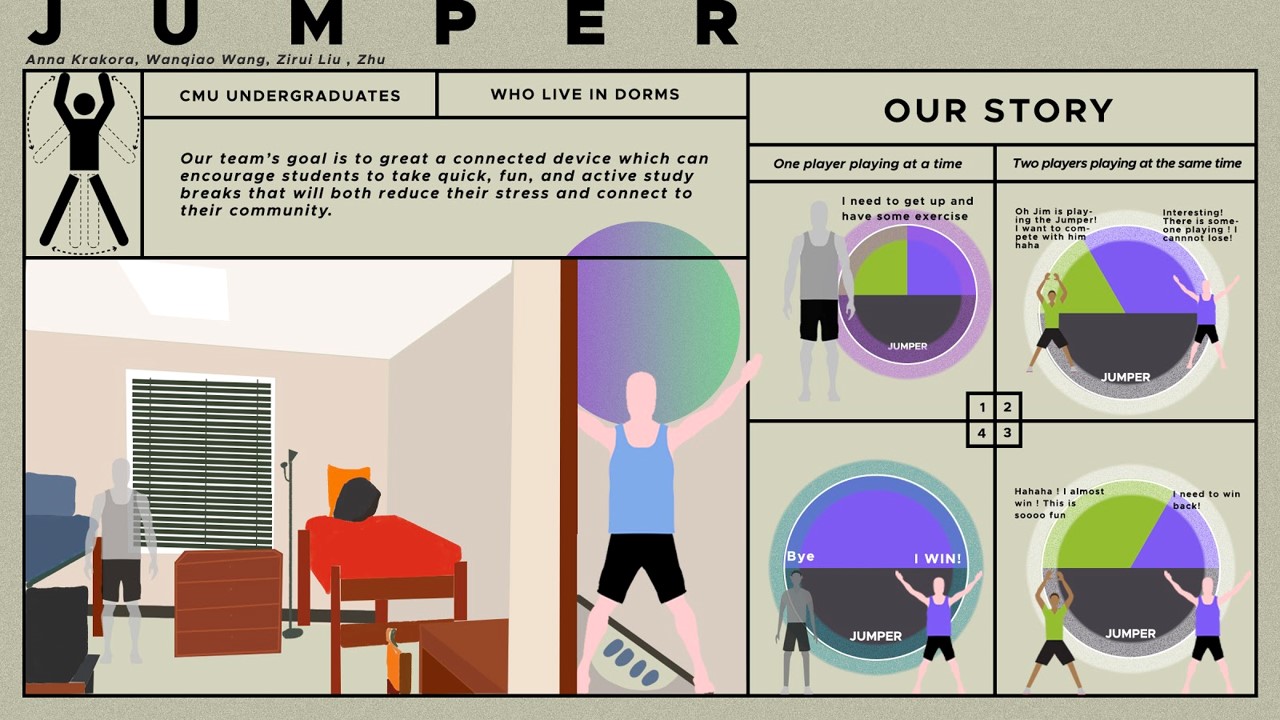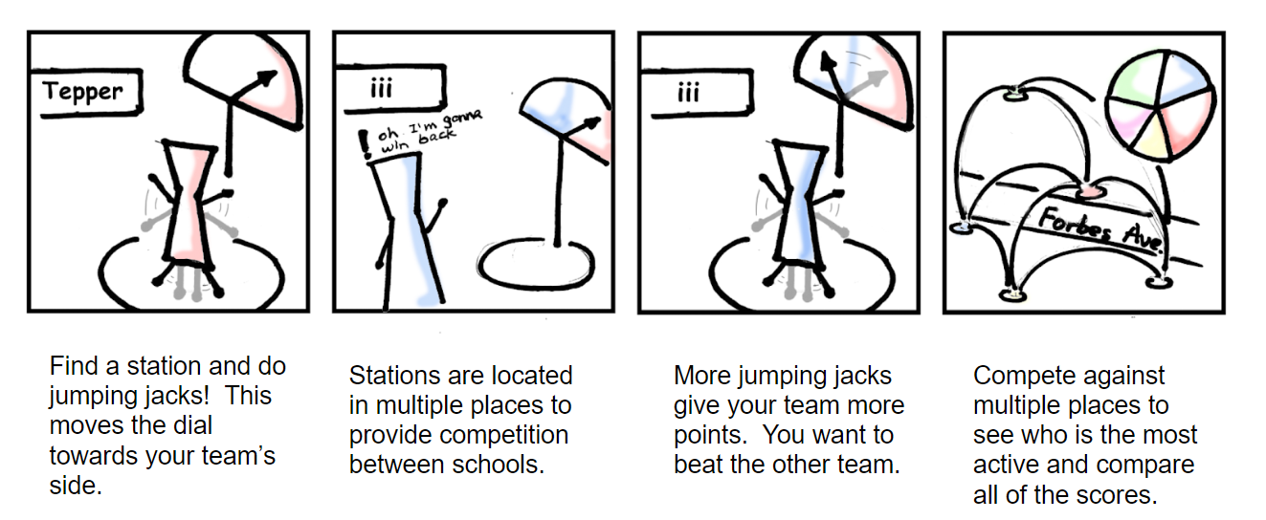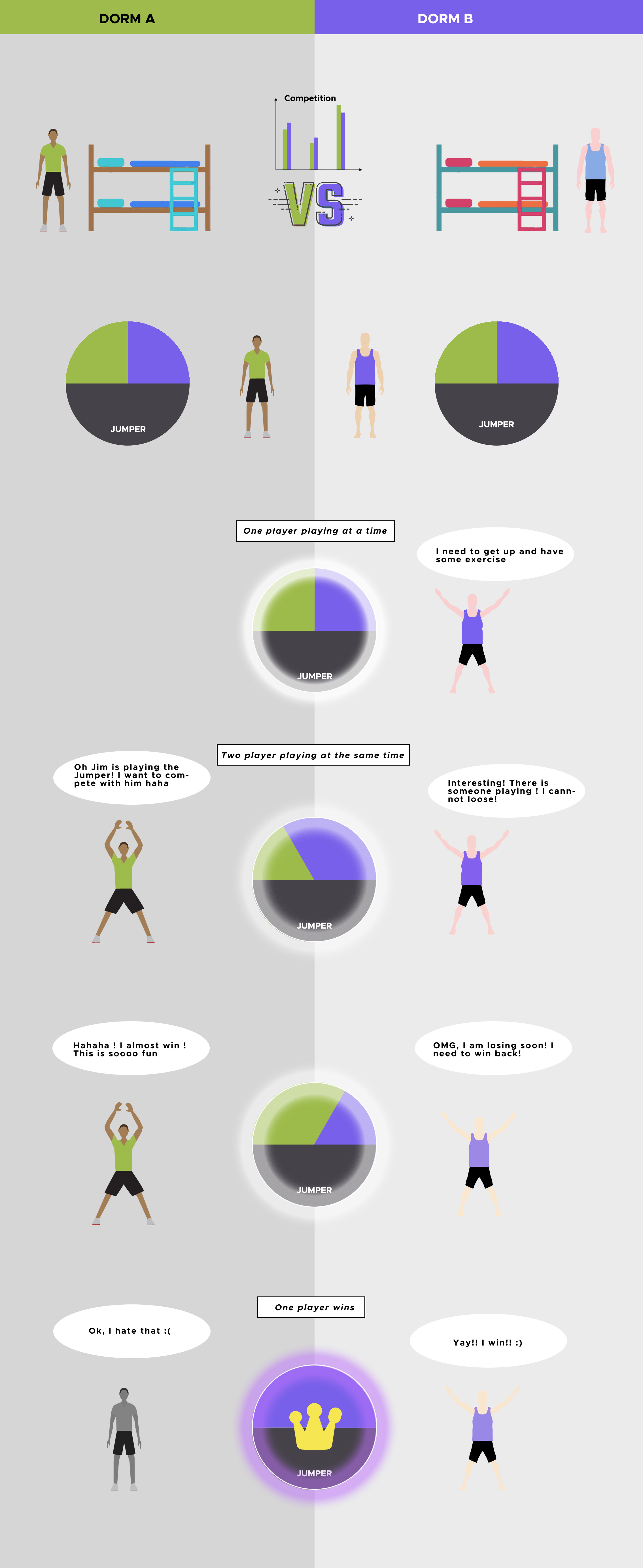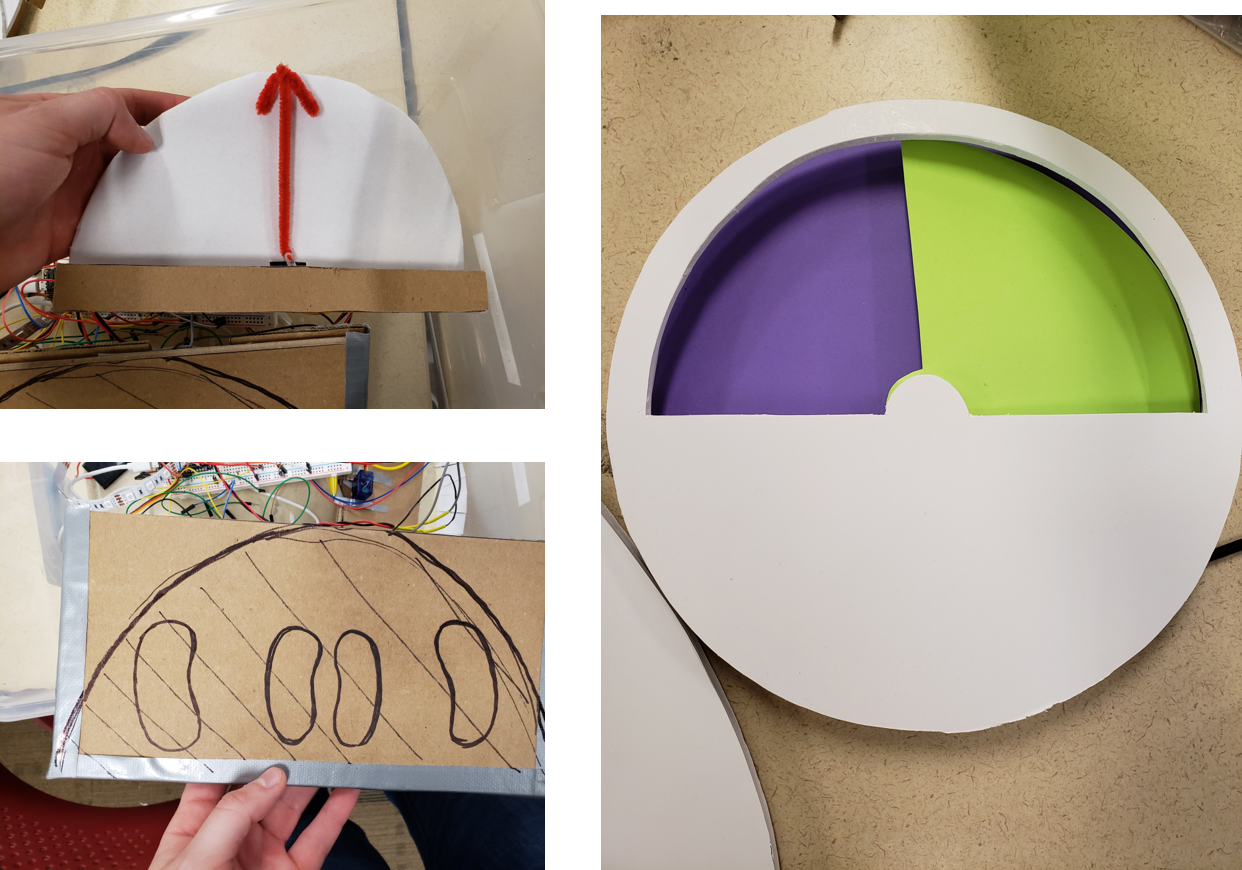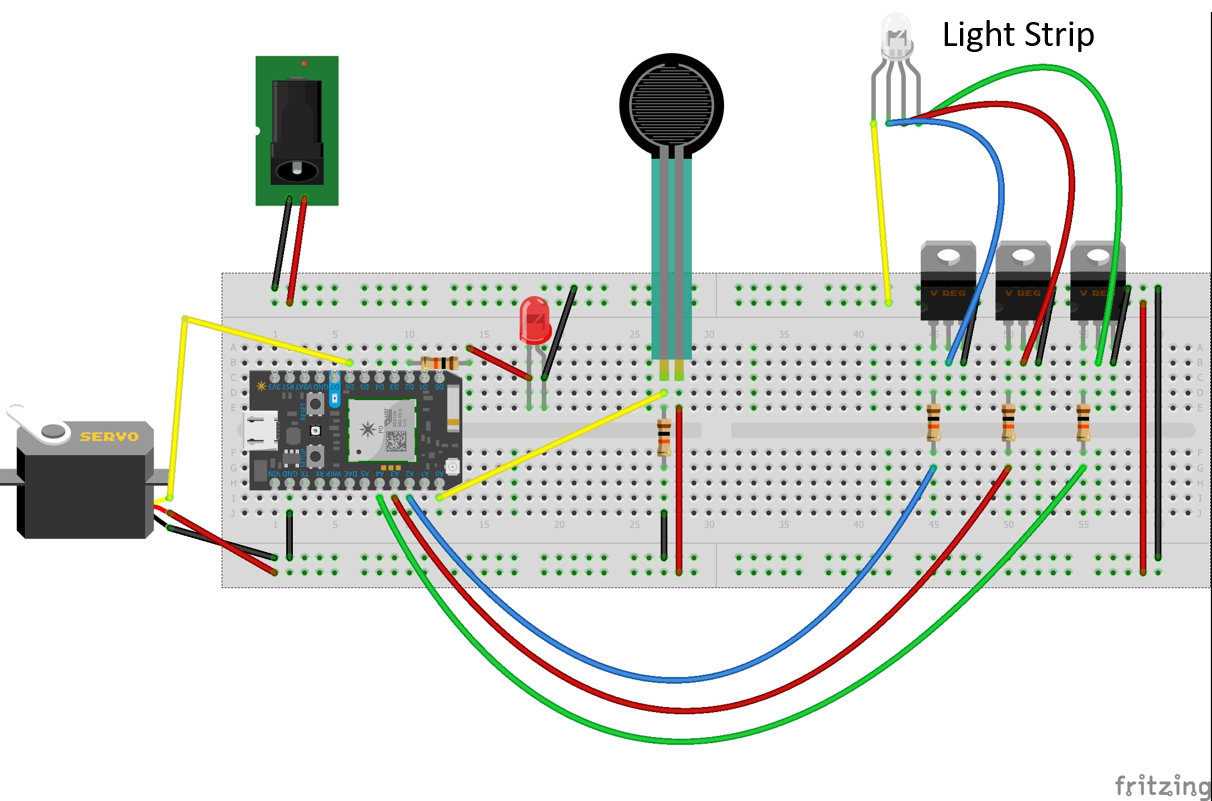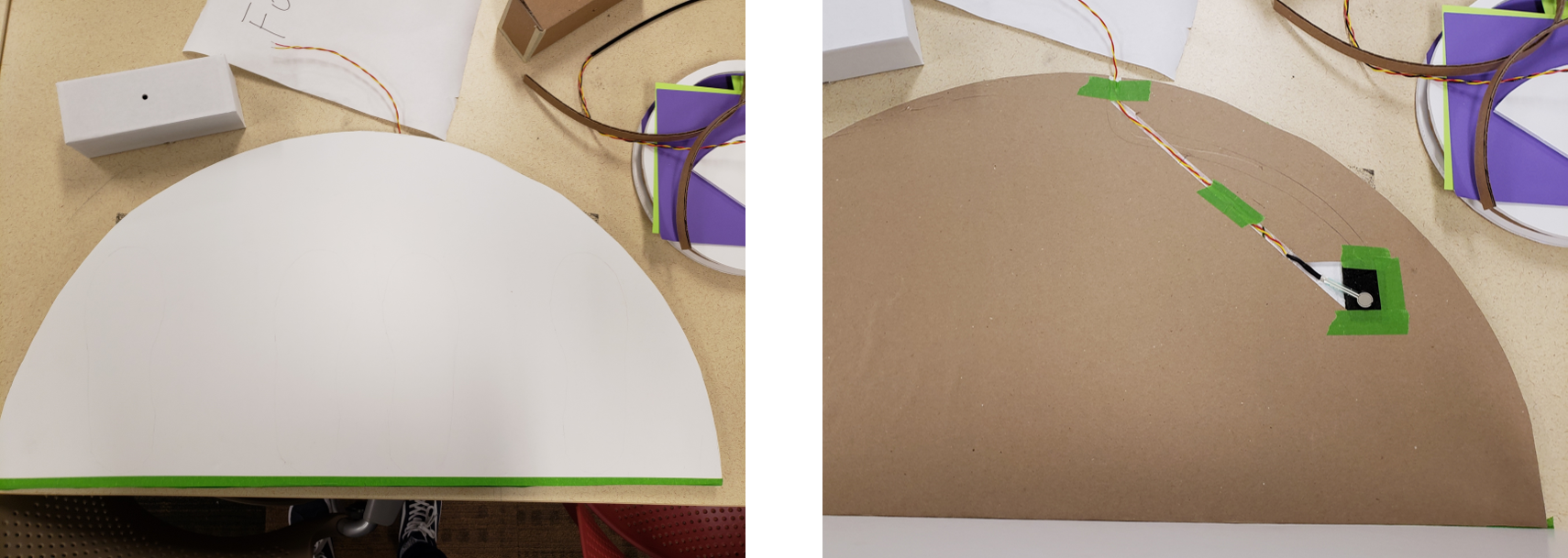Prototyping
In this device, a force sensor in the floor mat detects whether or not the player has completed a jump. The display, which shows if you or the other player has more jumps, shows the score with a combination of lights and an arrow. When you jump, your display lights up and the arrow moves towards your side of the display. If the other player is winning, the arrow moves towards their side of the display. You win by completing more jumping jacks than your competitor and moving the arrow all the way towards your side of the scoreboard.
The first step in prototyping was to create a small scale version of the device to make sure that the force sensor and servo could interact with each other as the team intended.
We then worked on prototyping better ways to display the score. This is when we included the led strip and different types of arrows.
The particles were then connected through the particle cloud so that the displays show which player has the most recorded jumps.
Finally, all of the different components of the system were combined for a final round of testing and debugging.
